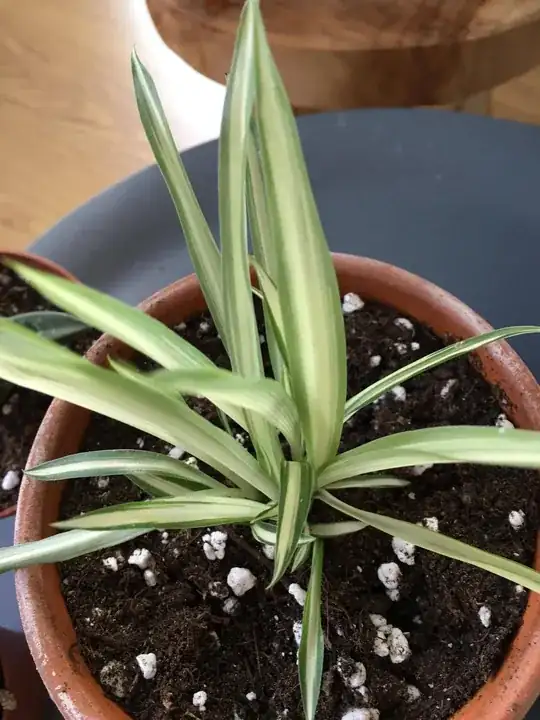I purchased a Chlorophytum Comosum in October 2016. It's 3 or 4 separate plants. I moved it from its 10cm diameter plastic pot into one that's roughly 15 cm and about 20 cm deep, without drainage. When moving it, I just took all of the soil and the plant from the original pot and placed it into a hole that I dug in the new one.
I usually water this plant once every 10 days. The dirt is usually dry on the surface but still damp underneath. At the bottom of the pot I used 3 small plastic pots to act as a platform for the plant and let water fall through to the bottom, so that it wouldn't gather around the roots.
The healthiest of the plants has started putting out spiderettes that are growing fairly large, and it has increased in size since I purchased it.
All of the plants are growing fast, and recently some of the leaves have grown thin and droopy, and I just noticed that they're very discolored, and pale. A few of the leaves have become unable to support themselves and are bending.
The same issue is affecting a small spiderette that I just repotted from a completely different plant, and I have been watering a few times a week to keep the soil damp.
What's wrong with this plant? How can I help the plant recover its original robustness and grow thicker, non-pale leaves?
This is how the plant looks today. It was watered about 5 days ago. It looks very droopy and out of shape:
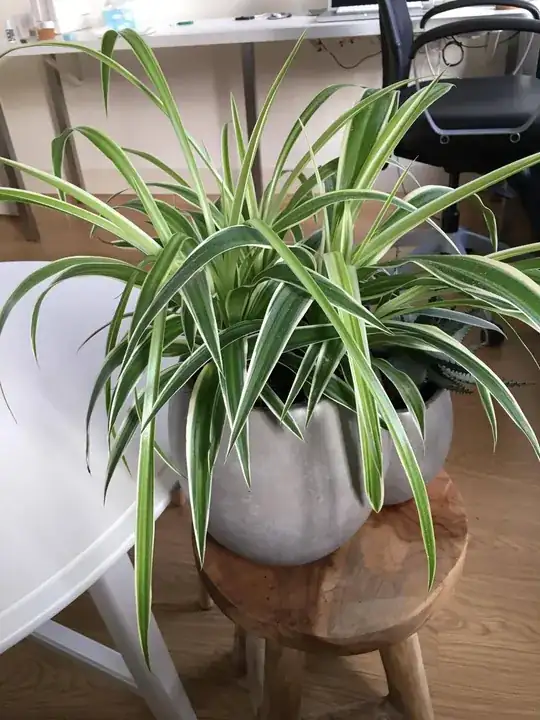
Detail on the discoloration I mentioned:
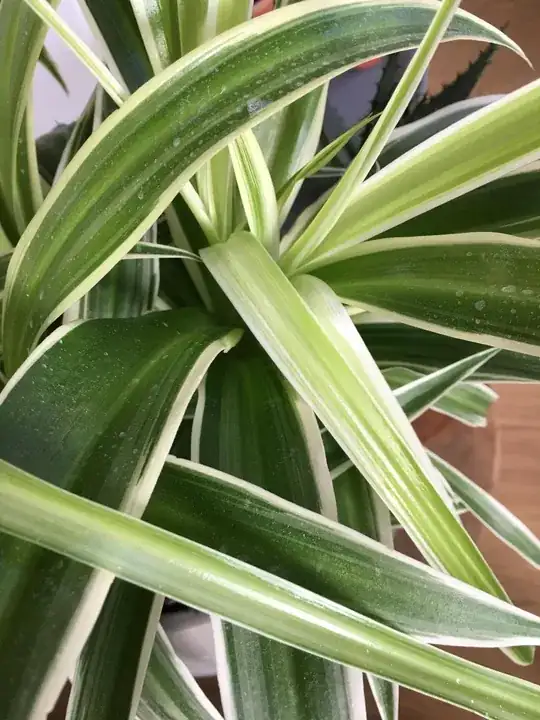
This is what the plant looked like about a month ago. The plant had grown noticeably during this time.

Here's another picture showing what the plant looks like when it's in best shape:
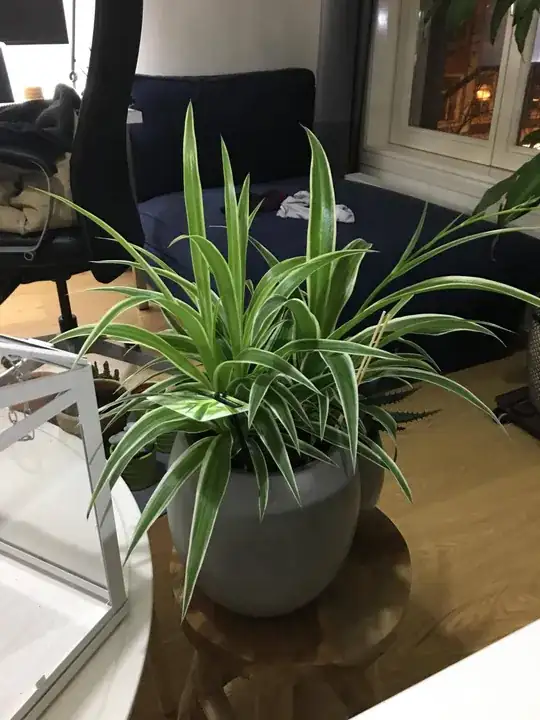
Here is a picture of the other spiderette taken from a separate plant, right after it was potted:
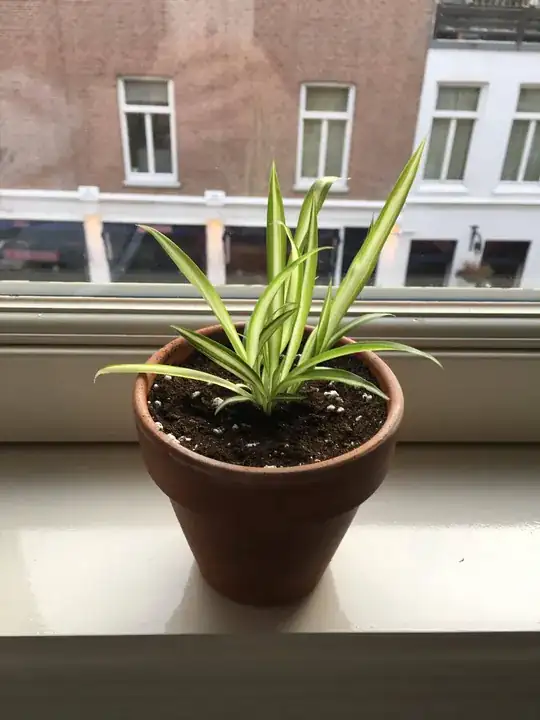
This is how it looked today (visibly more pale than before):
